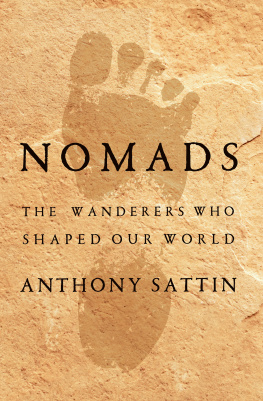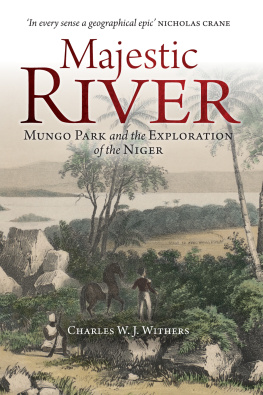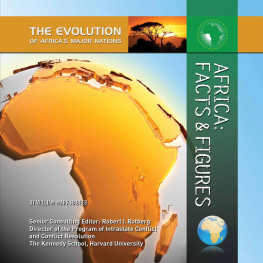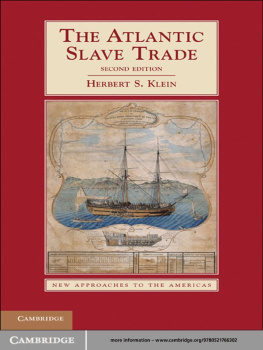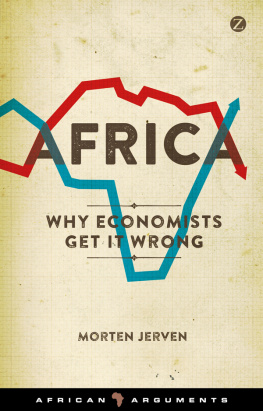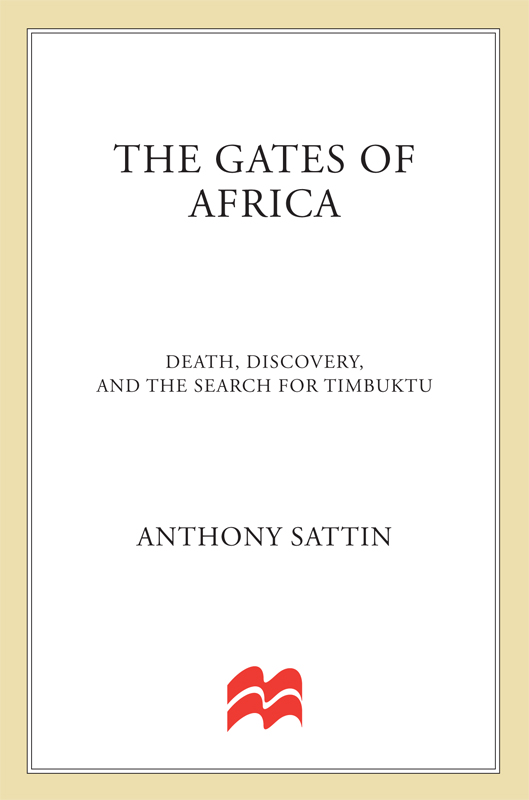
The author and publisher have provided this e-book to you for your personal use only. You may not make this e-book publicly available in any way. Copyright infringement is against the law. If you believe the copy of this e-book you are reading infringes on the authors copyright, please notify the publisher at: us.macmillanusa.com/piracy.
CONTENTS
For Sylvie,
ever my inspiration,
and for Johnny and Felix,
our young adventurers
ILLUSTRATIONS
Sir Joseph Banks, the godfather of exploration, painted by John Russell, R.A., in 1788. (Private Collection. Photograph by Alex Saunderson)
Soho Square in 1812 by George Shepherd. (Dixson Galleries, State Library of New South Wales)
Frances Rawdon, the Earl of Moira, in 1789 by Sir Joshua Reynolds. (The Royal Collection 2003, Her Majesty Queen Elizabeth II)
Bryan Edwards Esq. (By courtesy of the National Portrait Gallery, London)
Major James Rennell by John Opie. (Private Collection. Photograph courtesy of Southampton Oceanography Centre)
John Ledyard, the first great American traveller. (Dartmouth College Library)
Sidi Hassan, the dashing late Bey of Tripoli. (Title page of Letters Written during a Ten Years Residence at the Court of Tripoli by Miss Tully, 3rd edition, 2 vols. Colburn, London, 1819)
Murzuq in the Fezzan, now southern Libya. (Drawn by J.M. Bernatz from a sketch by Dr Barth. From Travels and Discoveries in North and Central Africa by Henry Barth. Longman Green, 1857)
Mungo Park by Thomas Rowlandson. (By courtesy of the National Portrait Gallery, London)
Medina, the Wuli capital. (From Travels in Western Africa by William Gray. John Murray, London, 1825)
The capital of Bondo. (From Travels in Western Africa by William Gray. John Murray, London, 1825)
A View of Alis Tent at the Camp of Benowm. (J.C. Barrow, from a sketch by Mungo Park. From Travels in the Interior of Africa by Mungo Park, 2nd edition, 1799)
Mungo Park having just reached the River Niger: the way it looked in London. (By Lady Elizabeth Foster. From Travels in the Interior of Africa by Mungo Park, 2nd edition, 1799)
A view of Kamalia. (J.C. Barrow, from a sketch by Mungo Park. From Travels in the Interior of Africa by Mungo Park, 2nd edition, 1799)
The Battle of Heliopolis by Leon Cogniet, c. 1850. (Courtesy Mathaf Gallery, 24 Motcomb St, London SW1)
The Pyramids and Giza Plateau, by Henry Salt. (Private Collection)
Portrait of Henry Salt by Joseph Bonomi. (Reproduced by kind permission of Hisham Khatib)
Jean Louis Burckhardt, Swiss gentleman, before leaving for Africa. (Etched by Angelica Clarke, from the original drawing by Slater. From Travels in Nubia by J.L. Burckhardt. John Murray, 1822)
Burckhardt as he appeared in 1817. Portrait by Henry Salt. (Reproduced by kind permission of Hisham Khatib)
Abu Simbel, Ramses IIs great temple complex. Sketch by Linant de Bellefonds. (Reproduced by kind permission of The National Trust/The Bankes of Kingston Lacy & Corfe Castle Archives, Dorset Record Office. NT/BKL (unnumbered). Photograph The British Museum)
William Martin Leake. (Portrait by Christian Albrecht Jensen. By courtesy of the National Portrait Gallery, London)
John Barrow. (Portrait attributed to John Jackson. By courtesy of the National Portrait Gallery, London)
Major Alexander Gordon Laing.
Rn Cailli. (Engraved on stone by C. Hamburger. From Travels through Central Africa to Timbuctoo by Rn Cailli. Colburn & Bentley, London, 1830)
Timbuktu as it was during the age of the African Association. (Engraved by J. Clark. From Travels through Central Africa to Timbuctoo by Rn Cailli. Colburn & Bentley, London, 1830)
Kano, one of the Hausa cities, a city of such sophistication and colour that Lieutenant Hugh Clappertons naval dress uniform failed to turn heads. (Drawn by J.M. Bernatz from a sketch by Dr Barth. From Travels and Discoveries in North and Central Africa by Henry Barth. Longman Green, 1857)
Camel Riders in Nubia, by Linant de Bellefonds. (Reproduced by kind permission of The National Trust/The Bankes of Kingston Lacy & Corfe Castle Archives, Dorset Record Office. NT/BKL (XI.A.92). Photograph The British Museum)
(All book illustrations photographed by Alex Saunderson unless otherwise indicated)
MAPS
CHRONOLOGY
1787 | Settlement of freed British slaves creates a colony at Sierra Leone |
1788 | The African Association is formed and sends John Ledyard to Cairo with instructions to cross the Sahara from east to west. Simon Lucas heads for Tripoli to cross the Sahara from north to south |
1790 | Daniel Houghton sails up the Gambia River to cut inland to the Niger and Timbuktu |
1792 | W.G. Browne independently sets out for the Nile and Abyssinia |
1795 | Mungo Park sails to the Gambia River to cut inland to the Niger and Timbuktu |
1797 | Frederick Hornemann arrives in Cairo en route to Fezzan and Timbuktu |
1804 | Creation of the Peul Empire of Sokoto, to the detriment of the Hausa States |
1805 | Henry Nicholls is sent to Calabar to travel north towards the Niger. Mungo Park sets out for the Niger again, backed by the British government, advised by the African Association |
1807 | The slave trade is outlawed by British Parliament. British government takes over Sierra Leone as colony |
1809 | Henry Salt travels to Abyssinia. Jean Louis Burckhardt leaves for the Middle East and then Timbuktu |
1816 | Tuckeys expedition to the mouth of the Congo |
1818 | Lyon and Ritchie sail to Tripoli to cross the Sahara to the Niger |
1821 | Creation of Socit de Gographie de France. Captain Gordon travels up the White Nile |
1822 | Clapperton, Denham and Oudney leave Tripoli to cross the Sahara |
182527 | Laing leaves Tripoli for Timbuktu. Clapperton and Lander in Sokoto |
182628 | Linant de Bellefonds (French) travels up the White Nile |
1830 | Henry Welford travels up the White Nile. Geographical Society of London (soon the Royal Geographical Society) is founded |
1831 | The African Association is merged with the Royal Geographical Society |
A NOTE ON SPELLING
In spite of the fact that Samuel Johnsons Dictionary of the English Language was already into its sixth edition by the time the African Association was founded, correspondents used a variety of English spellings and were liberal, and at times random, in their use of capital letters. Throughout I have tried to find a balance between veracity, ease and modern understanding. I have left original spellings intact for your pleasure whenever I have quoted from contemporary sources. Spelling of foreign and particularly Arabic words seems to have no logic to it. A shaykh can be spelled shek, sheikh, sheik and so on. As there is no universally agreed convention on the transliteration of Arabic words (surely something Sir Joseph Banks or one of his friends would have seen to by now), I have adopted my own al not el, sharif not shereef. There is a similar range of place names, with Timbuktu spelled Tambuta, Tombooctoo, Timkitoo and a range of other variants. For these I have used modern spellings wherever possible, so Hausa not Houssa, Bondo not Boundou. I hope the result retains some of the original character, but is not so opaque as to be confusing.


